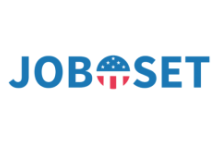Using Artificial Intelligence to Match Veterans to New Careers
de NATIONAL VETERANS TRANSITION SERVICES INCThe National Veterans Transition Services, Inc. (NVTSI), a 501(c)(3) organization headquartered in San Diego, California, requests funding to support the development and scaling of an Artificial Intelligence-based Veteran Job Matching app, for transitioning Military, Veterans and Spouses. The annual cost for this program is $250,000; for maintenance, programming, marketing, and development.
The Need: According to the Department of Labor Veterans Employment & Training Service (DOLVETS), there is a need for both a more sophisticated matching mechanism and a simpler interface that can pull from existing data sources (from Federal platforms like O*NET, the Credentialing Opportunities On-Line (COOL) program, and the National Labor Exchange, to LinkedIn profiles, resumes, or job descriptions that individuals and businesses have created).
The Research: DOLVETS cites that veterans complete their military service with unique and technical skillsets that bring value to all sectors of the economy but can encounter challenges framing their experience and skills for civilian employers. American businesses also report that they are also missing an opportunity to attract and retain a capable, competent workforce, and recognize the value in veterans and spouses.
Many job boards, veteran hiring programs, and other initiatives exist, but there are disparate platforms of valuable data. Traversing across these resources can be overwhelming for both first-time job-seeking veterans and businesses with limited time to fill urgent needs. Additionally, most job search tools for Service members are based purely on military occupational specialties, which do not accurately represent the breadth of experiences many individuals have. Finally, small businesses in particular do not have the staff capacity to build out robust skills profiles that better describe hiring needs.
Simultaneously, while veteran employment rates are currently at historically low levels, a recent study by the Center for New American Security, suggest that post-military personnel are experiencing significant underemployment and having difficulty finding “meaningful employment opportunities.”
The study cites a contributing factor to the shaky transition process is attributed to an “ocean of veteran service options,” which ultimately overwhelms applicants and paradoxically complicates the transition process.
“There remains a lack of clear pathways from military service to particular jobs—there is no comprehensive roadmap as to which credential, academic degree or job placement program would best help a veteran reach a particular career goal,” the researchers wrote.
The report suggested that instead of creating new employment programs, it would be helpful if resources were consolidated, focused on specific veteran subpopulations that currently do not participate in employment programs, and encouraged interpersonal contact as a preferred method to build professional connections.
The Solution – To solve this problem, NVTSI turned to two PhD’s from MIT who conceived and developed Job-Set, a smartphone-based application that uses Artificial Intelligence to match veterans with jobs. Job-Set provides virtual (technology-based) solutions to improve job matching and assessment strategies that accelerates employment for veterans.
Job-Set has developed two patent-pending technologies:
1. Real-time analysis software that uses Artificial Intelligence to produce competency-based models that focus on learning rather than on duration of training for all available jobs on an existing job board. The algorithm can take job descriptions from any source - including CalJOBS - processing over 4 million jobs every 6 hours - to create a live database of available jobs based on skills rather than keyword search. Employers can then modify the profile to their needs, such as Wounded Warriors, and specific task competencies needed.
2. A Mobile App that helps veterans produce a personal "Employment DNA" - a competency-based profile of those same parameters, so when they look for jobs, they are seeing how their competency profile matches up to the job. The user enters his/her veteran & civilian employment experience, prior education, relocation preferences, ex-offender status, and disability, then plays 'swipe games' that performs an assessment of skill levels including literacy, numeracy, and language proficiency, including aptitudes, abilities (skill gaps) and supportive service needs.
When combined, the Job-Set App allows a TSM/veteran to be matched to jobs without the use of a keyword or prior knowledge of what jobs are best, both locally and out-of-area. Just like a dating app, the user sees as output a percentage matchup between a user and a job, with a side-by-side skill-gap comparison of the two. The app then provides an automatically built resume, and an opportunity to apply for the job, right within the app.
Job-Set leverages technology borrowed from other disciplines - namely the dating app matching technology, to provide new, more efficient, and effective way of directing resources. It is also a scalable solution, with the App available to transitioning service members, veterans, Guard/Reserves - free of charge - on Android or Apple phones or tablets. As a standalone product, it provides speed, agility and scale needed to accelerate employment for workers desperately in need of help. However, as part of an integrated solution within the job-placement community, it has the potential to substantially increase the effectiveness, scale and/or capacity of existing workforce system programs and funding streams.
Job-Set’s algorithms also provide unique insight into workforce and labor market employment statistics information, by providing local regional and national labor market area skill gaps related to local occupations in demand. It also provides information about how the local workforce development area is performing on local performance accountability measures, as well as performance information relating to the area’s delivery system by analyzing 1) the skills previously acquired by the cohorts as a group, 2) the skills acquired by the group by participating in the system, and 3) the skills needed in the local labor market.
